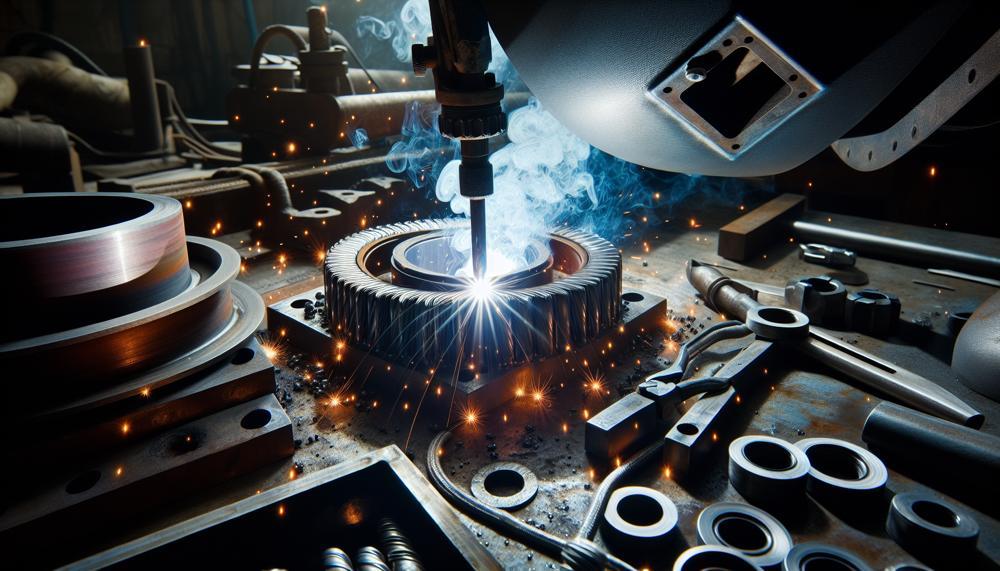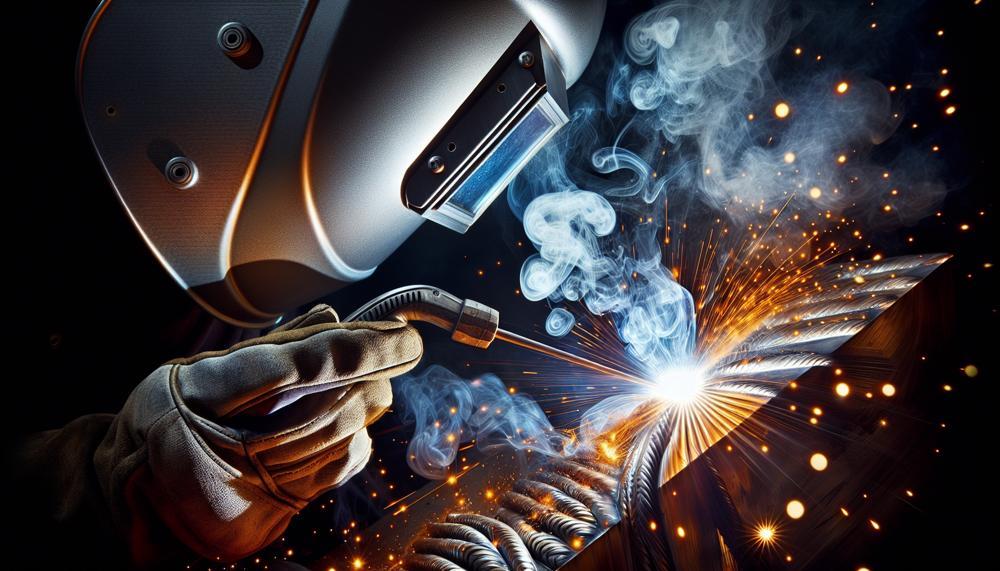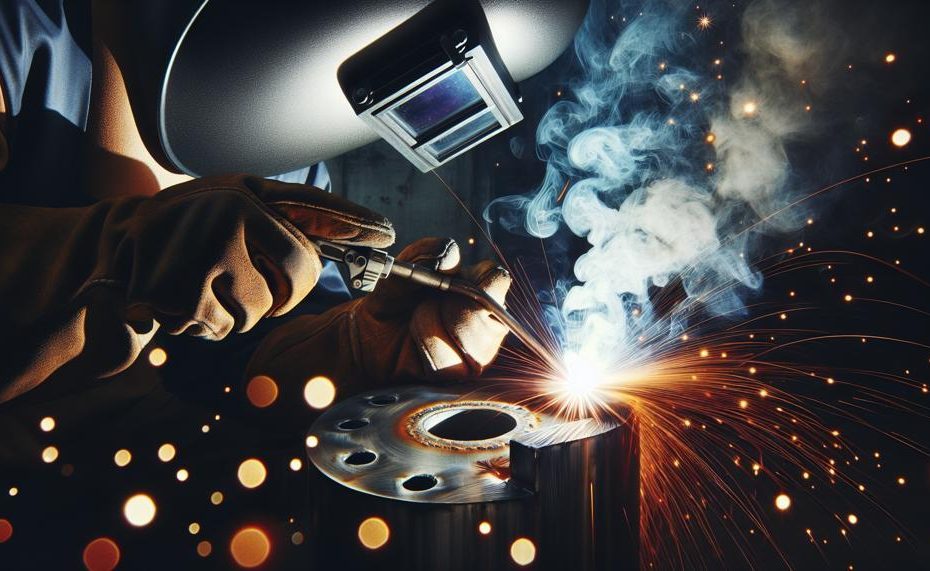Are you a welding enthusiast eager to expand your knowledge of different steel types? Or a beginner welder seeking to understand the nuances between chromoly and mild steel? Look no further, because we’ve got you covered.
Welding is an art that requires precision and understanding of various materials. And when it comes to steel, the type used can greatly impact the strength and durability of the final product.
Two commonly used options are chromoly and mild steel, each with its own unique properties and compatibility with different welding techniques.
So, what should you keep in mind when considering welding chromoly to mild steel? Let’s break it down:
- Chromoly steel is a high-strength alloy containing chromium and molybdenum, making it ideal for applications that require superior tensile strength.
- On the other hand, mild steel is a low-carbon option that is easy to work with and often used in construction projects.
- Both chromoly and mild steel can be welded using various techniques such as MIG, TIG, or stick welding.
- However, due to its higher carbon content, chromoly requires preheating before welding to prevent cracking.
- On the other hand, mild steel typically does not require preheating but may need post-weld heat treatment for certain applications.
- When properly welded, both chromoly and mild steel can result in strong and reliable welds.
Whether you’re tackling a heavy-duty project or a simple repair job, understanding the compatibility of these two types of steel can help you choose the right material for your welding needs.
Stay tuned for our next blog post where we dive deeper into the differences between these two popular steels.
Contents
What is Welding Chromoly?
Welding chromoly is a complex process that requires meticulous preparation and specialized techniques to create a strong and long-lasting bond between two steel pieces. This type of welding is commonly used in various industries, including automotive, aerospace, and construction, due to its exceptional strength and versatility.
To effectively weld chromoly, it is crucial to thoroughly clean the material to eliminate any impurities that may affect the welding process. Additionally, preheating the steel to a specific temperature is essential to minimize the risk of cracking and ensure a strong weld.
The actual welding process involves using a specialized technique known as gas tungsten arc welding (GTAW), also referred to as TIG welding. This method utilizes an electric arc between a non-consumable tungsten electrode and the base metal to create the weld.
The welder carefully controls the heat and pressure to achieve a smooth and precise weld.
Using chromoly in welding projects offers several advantages. Its high strength-to-weight ratio makes it stronger and lighter than other types of steel, making it ideal for applications where weight is a critical factor.
Moreover, chromoly has outstanding fatigue resistance, meaning it can endure repeated stress without weakening or breaking. It is highly versatile and can be welded using various techniques, making it suitable for different types of projects.
Its excellent ductility also allows it to be bent or formed into different shapes without cracking.
Can you weld chromoly to mild steel
It is entirely feasible to fuse chromoly and mild steel by utilizing the proper welding rods and techniques. However, it should be noted that the strength of the bond is highly reliant on the type of welding rod utilized, with E70S- being the most optimal choice for this task.
TIG welding is highly recommended for superior control and precision, while stick welding is not suitable for chromoly.
Prior to welding, it is crucial to preheat the materials and ensure thorough cleaning to achieve a robust bond between the two materials. Chromoly boasts numerous benefits, including a high strength-to-weight ratio and exceptional fatigue resistance, making it a widely favored option in various industries.
Welding chromoly and mild steel together may seem like a daunting task at first, but with the right tools and techniques, it can be successfully accomplished.
The key to achieving a strong bond lies in selecting the appropriate welding rod, with E70S- being the most suitable choice for this job. TIG welding is often recommended due to its ability to provide greater control and precision, ensuring a more accurate fusion between the two materials.
On the other hand, stick welding is not recommended for use with chromoly as it may compromise its strength and integrity.
Understanding the Chromoly Material
Chromoly, also known as chrome-moly or chromoly steel, is a unique metal alloy composed of chromium, molybdenum, iron, and carbon. This composite material has gained popularity in engineering and manufacturing industries due to its exceptional properties, such as high strength, lightness, corrosion resistance, and ductility.
In terms of chemical makeup, chromoly differs from mild steel because of the addition of chromium and molybdenum. These elements provide chromoly with exceptional characteristics that make it suitable for a variety of applications. The inclusion of chromium offers impressive resistance to corrosion, while molybdenum adds to its strength and high-temperature capabilities.
One significant difference between chromoly and mild steel is their welding capabilities. While mild steel can be easily welded using various techniques, chromoly requires more specialized methods. Its lower carbon content makes it more vulnerable to cracking during welding.
Therefore, proper preheating and cleaning are essential for creating a durable connection between chromoly and mild steel.
To achieve a robust bond between chromoly and mild steel, it is crucial to use the right welding rods and techniques. For instance, TIG welding with E70S- rod is recommended for joining these two materials together. This combination provides high strength and excellent shock-absorbing abilities.
Pre-Weld Preparation
Pre-weld preparation is essential for creating a successful weld between chromoly and mild steel. Follow these steps to prepare for welding:
- Clean the metal surface: Before beginning the welding process, it is crucial to remove any impurities, such as scale or oxides, from the metal’s surface. These contaminants can negatively impact the weld quality and result in cracked or weakened joints.
- Eliminate rust: Rust is a common problem with mild steel and can significantly affect the strength of the weld joint. Before welding, ensure that the joint is thoroughly cleaned of any rust using a wire brush or sandpaper.
- Choose the right gas: When welding chromoly to mild steel, it is important to use a low-hydrogen, low-alloy gas like argon, helium, or krypton. These gases provide better protection for the weld and reduce the risk of defects.
- Shield from high temperatures: Chromoly has a lower thermal conductivity than mild steel, making it more vulnerable to heat damage during welding. To prevent overheating, use a pre-heat or pre-heating shield to protect the weld joint from high temperatures.
- Use smaller filler spools and wire feeders: For optimal control over the welding process and to reduce the risk of overheating, it is best to use a smaller filler spool of weld wire and a smaller filler wire feeder when welding chromoly to mild steel.
- Preheat the joint: To further safeguard against heat damage, preheat just beside the weld joint with a thinner shield before welding. This will help distribute heat evenly and prevent warping or cracking.
- Start with a smaller base metal thickness: It is recommended to begin with a smaller base metal thickness when welding chromoly to mild steel. This allows for better control over heat generation and reduces the risk of defects in the weld joint.
By following these steps during pre-weld preparation, you can achieve strong and durable welds between chromoly and mild steel.
Hardened and Tempered Steel
Hardened and tempered steel is a type of steel that has undergone specific processes to enhance its strength, durability, and abrasion resistance.
The process of hardening and tempering involves heating the steel to high temperatures and then cooling it in different ways to achieve desired properties.
Here, it will delve into the intricate processes of hardening and tempering steel, as well as their impact on weldability.
Hardening Process:
The hardening process involves heating the steel to a precise temperature, typically ranging from 1500-1900°F, and then rapidly cooling it using either liquid nitrogen or oil.
This rapid cooling induces a phase transformation in the steel, resulting in increased hardness and wear resistance.
The exact temperature used for hardening depends on the type of steel being treated and the desired properties.
Tempering Process:
After the hardening process, the steel becomes too brittle and susceptible to cracking under force or pressure. To counteract this, the steel is then tempered by heating it to a lower temperature, usually between 350-1200°F, and then slowly cooling it in air.
This gradual cooling process allows the steel to regain some of its flexibility and toughness while maintaining its hardness.
Impact on Weldability:
The hardening process can make welding more challenging as it increases brittleness and susceptibility to cracking. However, with proper pre-weld preparation and techniques, certain types of hardened steel can still be welded successfully.
In contrast, tempered steel generally has better weldability due to its increased ductility and flexibility.

| Process | Temperature Range | Cooling Method |
| Hardening | 1500-1900°F | Rapid cooling with liquid nitrogen or oil |
| Tempering | 350-1200°F | Slow cooling in air |
In conclusion, hardening and tempering are two crucial processes for strengthening steel and improving its wear resistance.
While they can affect the weldability of steel, proper techniques and preparation can still allow for successful welding of hardened and tempered steel.
It is essential to understand the differences between these processes and their impact on steel to make informed decisions when selecting materials for welding projects.
How to welding chromoly to mild steel- Key Things to Know

When welding chromoly to mild steel, it is crucial to pay attention to the following key factors:
- Select the appropriate welding process: MIG or TIG welding with argon gas is the recommended method for welding chromoly to mild steel. This allows for better heat control and produces cleaner welds.
- Clean and grind the metal before welding: Properly cleaning and preparing chromoly before welding is essential due to its unique chemical properties. This ensures a strong weld and reduces the risk of contamination.
- Choose the correct filler material: High-quality filler materials such as ER80S-D2 and ER70S-2 are critical for welding chromoly to mild steel. These fillers have high tensile strength and can withstand the higher heat output of chromoly.
- Consider the thickness of joints: Welds that are too small or narrow may require re-welding, so it is important to carefully consider the size of the welds when working with chromoly.
- Monitor heat input: While preheating may not be necessary, it is important to monitor heat input during TIG welding to avoid cracking or weakening of the joint.
- Understand the benefits and challenges of chromoly: Chromoly has a higher strength-to-weight ratio than mild steel, making it ideal for structural applications. However, its high heat output can also make it challenging to weld, so understanding its properties is crucial for successful welding.
- Pre-weld preparation is crucial: Removing any scale or oxides from the surface of the metal and using a low-hydrogen, low-alloy gas for welding are important steps for creating strong and clean welds.
- Start with a smaller base metal thickness: Beginning with a smaller base metal thickness when welding chromoly to mild steel can help mitigate challenges such as high heat output and create a stronger weld joint.
Start with a small base metal thickness
When it comes to welding chromoly to mild steel, starting with a small base metal thickness is essential for various reasons. These include avoiding problems with melting points, ensuring a solid and durable weld, achieving greater accuracy and precision, and preventing unnecessary waste of valuable materials.
This is due to the distinct physical characteristics of chromoly and mild steel, as well as the necessity for proper fusion and bonding between the two metals.
As such, it is crucial to give careful consideration to the base metal thickness when joining these two types of metals.
To begin with, one of the primary reasons for starting with a small base metal thickness when welding chromoly to mild steel is to prevent issues with melting points. This is because chromoly and mild steel have different melting points, which can lead to difficulties in achieving a proper weld if not taken into account.
By starting with a thinner base metal thickness, it allows for better control over the welding process and helps ensure that both metals are heated evenly, resulting in a stronger and more stable bond.
Moreover, using a small base metal thickness also enables welders to achieve better control and precision while working.
This is especially important when joining two dissimilar metals like chromoly and mild steel since they have varying physical properties.
Conclusion
In conclusion, the process of welding chromoly to mild steel requires careful attention and a thorough understanding of the distinct characteristics of these two materials.
Proper preparation, including meticulous cleaning and preheating, is essential for creating a robust and enduring weld joint. The selection of welding technique and filler material also significantly impacts the final outcome.
By starting with a smaller base metal thickness and following recommended procedures, welders can successfully fuse these dissimilar metals together to produce high-quality and long-lasting welds.





